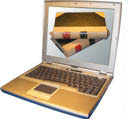December 2010
Monthly Archive
Thursday, 16 December 2010
The draft Terms of Reference for the Government’s review of the laws relating to the converged media and communications industry have been published.
Part of a FAQ on the website of the Department for Broadband, Communications and the Digital Economy, which is conducting the review, notes that:
* ‘Convergence’ describes the trend whereby devices (such as televisions, mobile phones and computers) and platforms (such as broadcast, telecommunications and broadband) that once had distinct functions may now support many different services and applications.
* You can now watch a TV show on your television, your computer or your phone. You can also make a phone call from your laptop or your email account. These examples illustrate the trend of convergence—that is, when the service experienced by the consumer is similar regardless of the network or device that delivers it.
* Convergence is driven by a range of evolving and new technologies including internet protocol networks, high-speed broadband and smart devices and phones.
The Department also notes that the incentive for the review, which will be conducted during 2011, is to ensure that Australia’s existing regulatory frameworks for broadcasting, telecommunications, and radiocommunications continue to operate appropriately in a media and communications sector that is becoming increasingly converged. Communications Minister Senator Conroy remarked in the media release announcing the review that the introduction of the National Broadband Network will accelerate the process of convergence. He also noted that the review will “look at all content delivery platforms including broadcast, mobile and fixed telecommunications and the internet”.
This review will consider possible changes to the three main acts governing the sector: the Broadcasting Services Act 1992, the Radiocommunications Act 1992, and the Telecommunications Act 1997.
The Department is accepting submissions on the draft Terms of Reference until Friday 28 January 2011.
Wednesday, 8 December 2010
It seems that digital television broadcasts in the United States are increasingly being received not via subscription television, but over the airwaves with the help of an old-style technology: rabbit ears.
Viewers who are either unwilling or unable to pay for increasingly expensive cable or satellite television are turning to free-to-air television, with the help of the new generation of rabbit-ear type antennas, which are designed to receive digital broadcasts.
The evidence of this move is not simply andectodal, but is supported by cable television companies and analysts, who have noted drops in pay television subscriptions. As further evidence, at least one cable provider (Time Warner Cable) started offering in November a cut-price package with a smaller range of channels.
Interestingly, it seems that consumers choosing free-to-air over subscription television services are supplementing their viewing with specific programs from cable television operators downloaded over the Internet, including from iTunes.
In a market saturated by subscription television options, is the move back to free-to-air a sign that cable television is simply too expensive these days, or that free-to-air plus selectively purchasing your favorite cable shows on iTunes is both more economical and more enjoyable? Probably both–as well as being a function of the nature of digital television broadcasting itself. Whereas analog television signals become progressively unclear as you move further away from the source of the signal (leading to constant adjustment of those rabbit ears at the margins), digital television broadcasts are typically either received fully or not at all. So remedying poor reception is not such a strong reason to go to subscription television any more.
The article does not discuss the use of external antennas (masthead or otherwise) at all. I wonder if viewers able to do so are also investing in antennas on their roofs?
